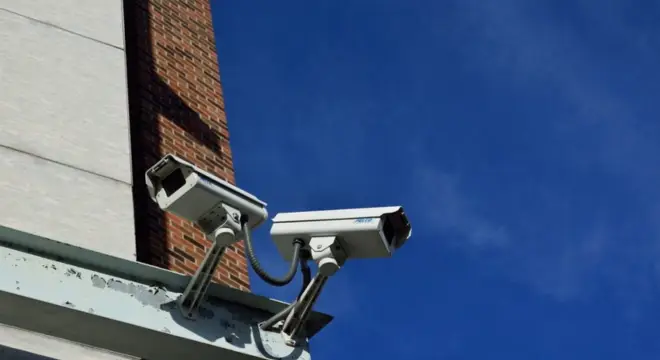Can You Really Leave a Candle Burning Unattended — or Is It Too Risky?
I get it — there’s something soothing about a candle flickering quietly on your nightstand or beside the bathtub. That soft glow can make a home feel calm, cozy, even safe. But I’ve also seen how quickly that same calm can turn into chaos. One small spark, a forgotten flame, and within minutes, the comfort turns into a fire emergency.
Most of us don’t think twice before leaving a candle burning “just for a minute.” Maybe you step out to grab your phone or check the oven. But here’s the uncomfortable truth: most candle-related house fires start in those exact moments — when we assume nothing bad can happen.
I’ve spent years studying fire safety data and talking to professionals who respond to these emergencies. The patterns are always the same: a beautiful candle, a quick distraction, and a situation that spirals out of control. That’s why in this guide, I’ll break down the real risks, the rare exceptions, and the right way to enjoy candles without putting your home at risk.
So before you light that next wick, let’s look at whether it’s ever truly safe to leave a candle burning when you’re not in the room — and what you can do instead to keep both the mood and your safety intact.
Understanding the Risks: What the Data Shows
Let’s be honest — most of us know that candles can cause fires, but we rarely think our little flame will be the one. The truth is, candle fires aren’t rare accidents. They happen far more often than people realize, and almost always for the same reasons: distraction, proximity to flammable items, and overconfidence.
How Common Are Candle Fires?
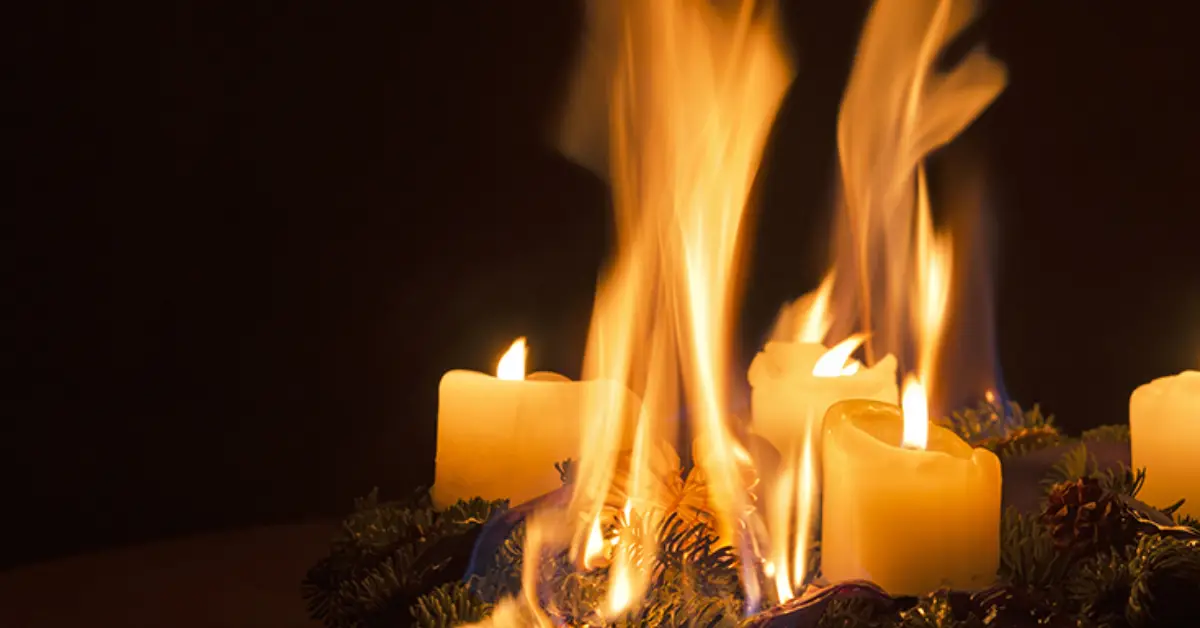
If you’ve ever thought, “What’s the worst that could happen?”, the numbers will make you pause. In the United States alone, candles cause an average of 12,000+ home structure fires every year, leading to around 130 deaths and hundreds of injuries. That’s not just a handful of freak accidents — that’s a pattern.
More than half (about 55%) of those fires start because something flammable — curtains, bedding, decorations, or paper — was left too close to the flame. It’s rarely a candle malfunction; it’s almost always a moment of human error.
A stable candle can turn dangerous in seconds if left unsupervised. The flame doesn’t have to “spread” — it just needs a single flicker toward something dry or hanging nearby.
Key takeaways:
- Candle fires aren’t isolated — they happen every day in regular homes like yours and mine.
- Most are preventable with small precautions.
- The risk grows exponentially once the candle is out of your line of sight.
What Percentage Start Because Someone Left the Room or Fell Asleep?
Here’s where the story gets personal. Roughly 1 in 5 candle fires happen because someone walked away or fell asleep while the candle was still burning. Think about that — 20% of all these fires start not from intent, but from inattention.
I’ve seen countless cases where people said, “I was only gone for a minute.” But that’s all it takes — a pet brushing past, a sudden draft, or the wick burning too low and cracking the glass jar. If you’re asleep or out of the room, you simply can’t react fast enough to stop it.
What this means for you:
- Never assume a candle will behave predictably; wax, wick, and air are all variables.
- Even short absences create risk windows.
- “Unattended” doesn’t mean hours — it can mean seconds.
Where Do Candle Fires Usually Occur?
More than one-third of all candle-related fires begin in bedrooms. It’s not surprising — that’s where people relax most, light candles for ambiance, and sometimes drift off to sleep.
Bedrooms are high-risk because they’re filled with flammables: soft furnishings, bedding, clothing, paper, even hair products on vanities. Combine that with low lighting and fatigue, and you have the perfect setup for a quiet fire that goes unnoticed until it’s too late.
Safety snapshot:
- Avoid placing candles near your bed, curtains, or upholstered furniture.
- If you light a candle to unwind before sleep, blow it out before you start feeling drowsy.
- Use stable, nonflammable holders — no glass jars sitting directly on wood.
For an official breakdown of home candle-fire statistics and prevention tips, you can check the NFPA Candle Safety Resource — it’s one of the few data-backed sources written for everyday readers.
What “Leaving a Candle Burning” Really Means: Scenarios & Intent

We often say “I only left it for a minute,” but that phrase can mean very different things in real life. How long you’re away — and where you go — dramatically changes the level of risk. Let’s break it down.
Short Absence (Leaving the Room for 5–10 Minutes)
If you’re just walking out to grab a drink or check on something, it might feel harmless. But even a few minutes is long enough for:
- A breeze to knock something flammable closer to the flame.
- Wax to overheat and cause a glass container to crack.
- A pet’s tail or child’s hand to bump the table.
When I leave a room, I treat a candle like a stove burner — if I can’t see it, it’s not safe to leave on.
Longer Absence Within the Home
Maybe you’re heading to another floor, doing laundry, or taking a shower. Now you’re adding more time, distance, and distractions. You can’t smell smoke from another room, and you can’t hear a small crackle turning into a blaze.
- Always extinguish before stepping away for longer than a few minutes.
- Set a “burn timer” if you tend to forget — even five minutes of unattended time can make a difference.
Leaving the Room for the Night or Falling Asleep
This is where most tragedies happen. People love falling asleep to soft candlelight — it feels peaceful. But once your eyes close, you lose every second that could have saved your life. A knocked-over candle or overheated wax pool can ignite nearby fabric within minutes.
- Never, ever leave a candle burning while you sleep.
- Switch to battery-operated candles if you want that warm nighttime glow.
Leaving the House While a Candle Burns
This one’s non-negotiable. Leaving a candle burning while you’re out is the same as leaving your front door open in a storm — you’re inviting disaster. Before heading out, it’s not just candles you should think about — make sure your home is fully safe by unplugging devices before leaving home. It’s one of the easiest ways to prevent electrical or fire hazards when you’re away. No matter how “safe” the setup seems, no flame is worth risking your home.
- Always double-check before leaving — make “extinguish candles” part of your routine.
- Remember: even self-contained candles can overheat and shatter.
When it comes to candles, leaving the room isn’t just a time issue — it’s a control issue. The moment you’re gone, you’ve given up your ability to stop something small from turning catastrophic. And that’s never worth the risk.
Would you consider using flameless candles if they looked and smelled just as good?
Key Factors That Increase Risk When You’re Not in the Room
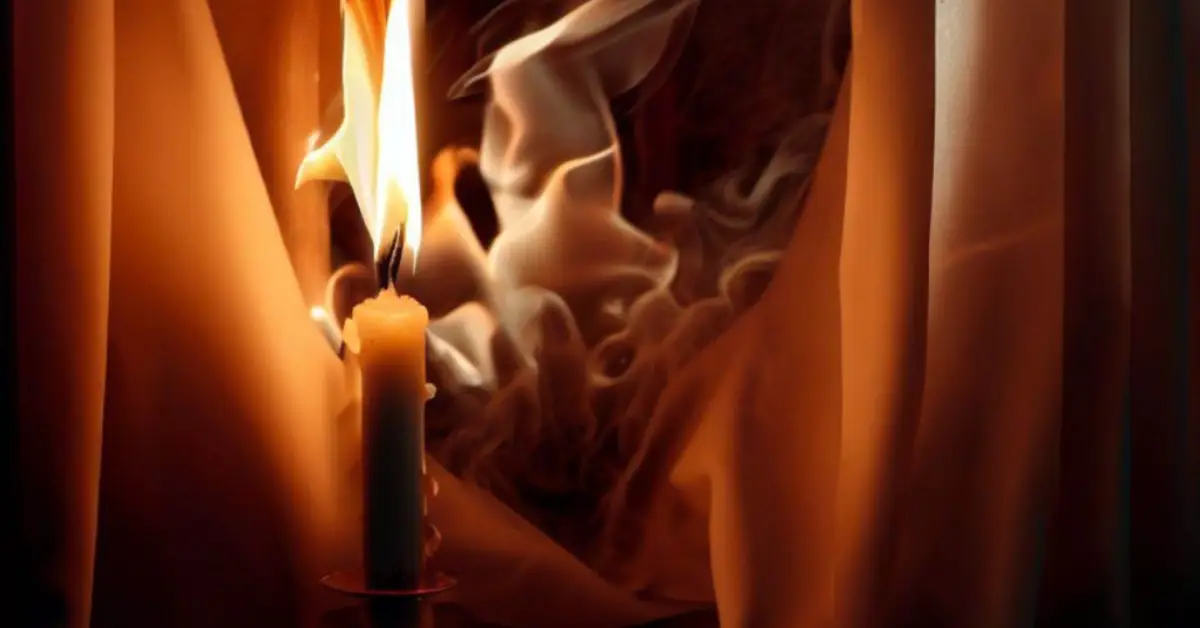
You’ve probably heard the rule “never leave a candle unattended,” but most people don’t realize why that’s so important. The risk doesn’t come from the candle itself — it comes from the environment around it. If even one of these factors is off, your calm, glowing space can turn into a fire hazard in seconds.
Proximity to Combustibles (Curtains, Bedding, Decorations)
More than half of all home candle fires start because something flammable was too close — curtains, paper decorations, bedding, or wooden surfaces. All it takes is a quick draft or a slightly higher flame, and that “safe distance” suddenly isn’t so safe.
If your candle sits anywhere near fabric or decor, you’re rolling the dice. Even materials you think are heat-resistant can catch faster than you expect when exposed to continuous heat. Home fire safety starts with prevention on all fronts — from candle placement indoors to outdoor maintenance. You can also protect your home by recognizing the signs it’s time to clean your gutters before buildup leads to fire or water damage.
Quick fix: Keep candles at least 12 inches away from anything that could burn, and never place them under shelves or hanging decor.
Untrimmed Wick or Over-Burning
You might think trimming the wick is cosmetic, but it’s actually about safety. An untrimmed wick produces a higher, unstable flame that flickers more and burns hotter. Over time, that heat can cause glass containers to crack or explode, especially if you burn for too long.
Rule of thumb: Trim the wick to about ¼ inch before each burn, and never let the candle run more than 3–4 hours at a time.
Air Drafts or Movement of the Flame
A flickering flame may look pretty, but it’s a red flag. Air movement — from ceiling fans, open windows, or AC vents — pushes the flame toward nearby objects and increases uneven burning.
If you notice your candle flame dancing wildly, it’s not “romantic ambiance” — it’s warning you something’s wrong. Move it away from airflow before you leave the room.
Location: Bedroom vs. Common Room
Bedrooms are statistically the most dangerous place for candle fires. Why? Because that’s where people relax, get comfortable, and fall asleep. Candles burn unattended far longer in bedrooms than in any other part of the house.
Living rooms or kitchens aren’t automatically safe either — they’re just less likely to be forgotten. If you’re lighting candles for relaxation, stick to spaces where you’ll stay alert.
Pets, Children, or an Unattended Environment
Even the most careful setup can go sideways when kids or pets are around. Cats jump on tables. Dogs wag tails. A single bump can knock over a candle or drag a curtain into the flame.
If you can’t guarantee a controlled environment, extinguish the candle before stepping away — even for a minute.
Type of Holder or Container
Not all candle holders are made equal. Thin glass jars can overheat and shatter, while wooden or plastic holders can ignite. Always use non-flammable bases like ceramic, stone, or metal, and ensure the holder is stable and heatproof.
The goal isn’t just to “be careful” — it’s to remove every variable you can’t control once you leave the room.
When (If Ever) It Might Be Safe — and What Conditions Must Be Met
Now, let’s be real — people still want to enjoy candles without feeling paranoid. So the better question isn’t “is it ever safe to leave it?” but “under what conditions does it stay reasonably safe?”
Safe Conditions Checklist
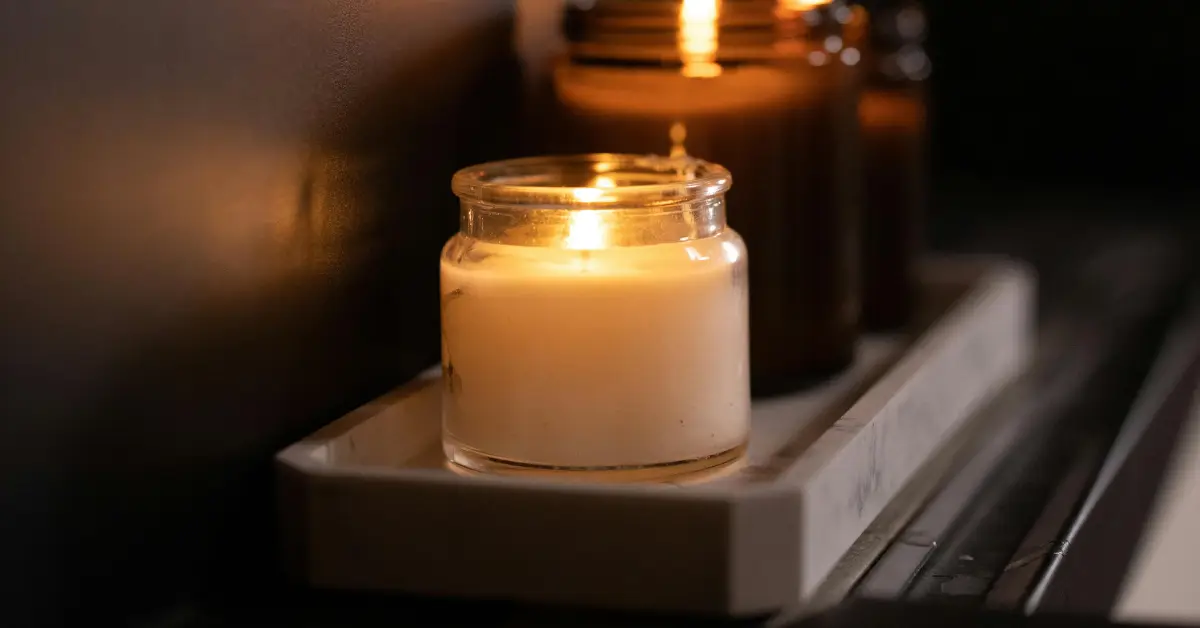
If you absolutely need to step away briefly, these are the bare minimums:
- Candle placed on a flat, non-flammable surface (stone countertop, ceramic plate, or metal tray).
- At least 12 inches (30 cm) of clear space around it — nothing hanging, leaning, or sitting nearby.
- Wick trimmed to about ¼ inch before lighting to control flame size.
- No active drafts — close windows, vents, and ceiling fans.
- Candle positioned away from reach of pets or children.
- Avoid bedrooms or confined spaces.
- Stop burning before the wax pool gets too low — never let it reach the bottom of the container.
These tips aren’t just from experience; they come straight from the National Candle Association’s Safety Guidelines — the gold standard for responsible candle use.
Scenarios: When You Might Leave It Briefly vs. When You Shouldn’t
There’s a difference between stepping out for 30 seconds and leaving for 30 minutes. Here’s a simple mental rule:
- Stepping into the next room (door open, within sight): Still risky, but manageable if all safety conditions are met.
- Leaving for more than a few minutes, closing doors, or going outdoors: Always extinguish it — no exceptions.
If you’re the type to forget candles once you leave the room, set a phone reminder or use smart home assistants to alert you after a set time.
Alternatives If You’d Prefer Not to Risk It
If the safety side of candles makes you uneasy — or if you live with kids, pets, or roommates — switch to flameless candles. Modern LED versions look nearly identical, come with timers, and even flicker realistically. You’ll still get the cozy mood without the stress.
Flameless candles are now one of the top choices for scent and ambiance because they eliminate open flame risk entirely while maintaining the aesthetic. They’re also more economical long-term since they don’t burn out.
When you understand these details, the “never leave it unattended” advice stops feeling like a boring safety lecture and starts sounding like common sense. Because once you know how quickly a peaceful glow can turn dangerous, you’ll never take that tiny flame for granted again.
Would you feel comfortable leaving a candle for five minutes after reading this — or is it not worth the risk anymore?
Expert & Practical Tips You Should Apply
At this point, we’ve covered the data and the risks — now let’s make it practical. These aren’t vague “be careful” suggestions. These are habits straight from fire-safety experts, candle associations, and real-life responders who’ve seen what happens when things go wrong.
From Industry Experts: The Golden Rule
If you’re not in the room, the flame shouldn’t be either. Their rule is non-negotiable: always extinguish a candle when leaving the room or going to sleep.
That’s not about paranoia; it’s about how fast small fires grow. A typical candle flame can reach temperatures above 1,400°F, and it doesn’t take long for that heat to spread. So, before you step out for “just a minute,” remember that even a well-contained candle can’t be trusted unsupervised.
Simple takeaway: If you can’t see it, don’t leave it lit.
Practical Burn-Time & Maintenance Advice
Here’s what seasoned candle users and safety bodies agree on: small maintenance steps make all the difference.
- Never burn longer than the manufacturer’s recommended time — usually 3–4 hours.
- Stop when there’s ½ inch of wax left. That final layer insulates the container from overheating and cracking.
- Trim the wick to about ¼ inch before lighting every time — long wicks burn hotter and smoke more.
- Use sturdy holders made of heatproof material like glass, ceramic, or metal — never wood or plastic.
- Store matches and lighters away from children and avoid leaving them near flammable items.
- Avoid lighting candles in the bedroom if you’re tired or likely to fall asleep — your reflexes won’t save you once you’re out.
These small, almost boring actions are exactly what prevent 90% of candle-related incidents.
Carrying a Candle During a Power Cut — What to Know
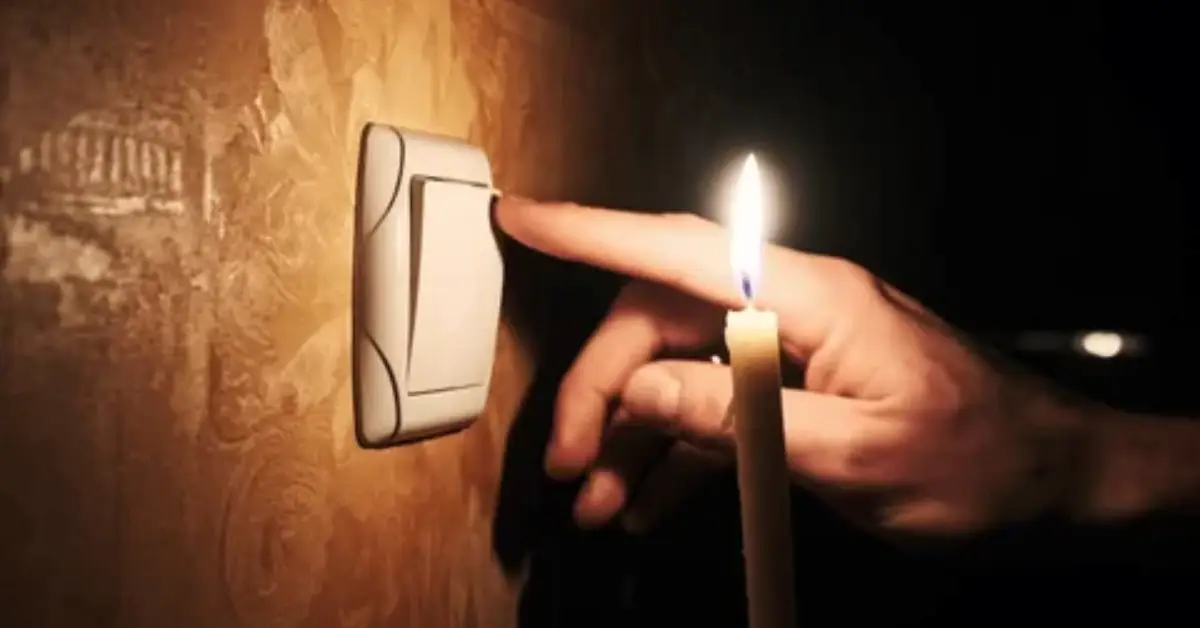
If you absolutely need to move a lit candle, treat it like carrying an open cup of gasoline.
- Always cup your hand around the flame to block drafts.
- Keep it away from your body and clothes, especially loose sleeves.
- Walk slowly and hold the candle upright — never tilt or let wax spill.
- Never carry a lit candle up or down stairs; blow it out first and relight it where you need it.
A flashlight or battery lantern is safer, but if you must use a candle, control the environment — don’t let the candle control you.
What to Do If Something Goes Wrong: Risk Mitigation & Emergency Response
Even with perfect precautions, accidents can still happen. And just like fires, water damage can strike unexpectedly too — learn what to do if your house gets flooded so you’re prepared for any home emergency.
Here’s how to stay ready and react fast if a situation turns risky.
Monitor While It’s Burning
Set a visible reminder — a timer, alarm, or smart assistant alert — to check your candle every 20–30 minutes. Stay within sight and avoid multitasking that could pull your attention away. If you have to leave suddenly, snuff it out before you walk off.
Smoke Alarms & Fire Extinguishers
It sounds basic, but it’s life-saving. Test smoke alarms monthly and keep a small extinguisher within reach of common candle spots (like the living room or bathroom). Make sure everyone in your home knows how to use it — most fires double in size every minute.
If You Smell Smoke or See a High Flame
The moment you see the flame rise unusually high or flicker erratically, don’t ignore it.
- Extinguish it right away using a snuffer or lid — never blow forcefully, as it can splash hot wax.
- Check the surroundings for any melted or scorched spots.
- If you smell smoke after extinguishing, stay for a few minutes to confirm nothing’s smoldering.
Insurance & Property Damage Angle
Here’s a rarely discussed fact — if a fire starts because of an unattended candle, some insurance policies may deny coverage due to negligence. It’s a small clause most people never read, but it can cost you thousands. The safest (and smartest) move is prevention — because no insurer can replace peace of mind.
Safer Alternatives and When They Make More Sense
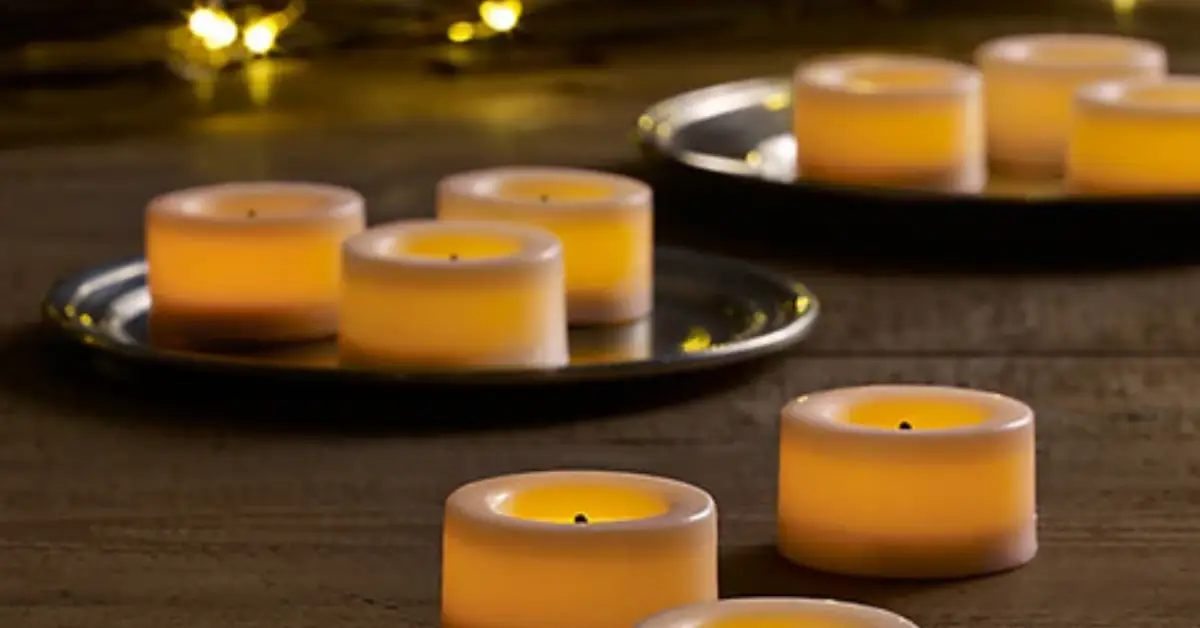
If you love the glow of candlelight but not the constant vigilance it requires, good news — there are safer ways to get the same effect without the open flame.
Flameless or LED Candles
Modern flameless candles look strikingly real — flicker, scent, and even “melted wax” designs. They’re completely safe to leave on, even overnight or when you’re out. The only downside is that they don’t warm the air or give off real smoke (which some people like for atmosphere).
Candle Timers or Sensor-Based Lamps
Some premium LED candles and smart lamps now come with motion sensors or timers that shut off automatically after a set period. Perfect if you often forget to blow out real candles.
When the Ambiance or Scent Is Desired But Flame Isn’t Practical
If you’re in a rental, have kids, or live with pets, switch to electric wax warmers or essential oil diffusers. You’ll get fragrance and mood lighting without the open flame.
Invest in Quality Candles & Holders
Cheap candles can have unstable wicks, poorly mixed wax, or thin glass containers that crack under heat. If you’re going to burn real candles, choose quality ones from trusted brands — they cost more but are built for safety. Pair them with heatproof holders that protect your surfaces and catch any dripping wax.
For more on safer candle alternatives and product testing, check out Southern Living’s guide to flameless candles — a great resource if you’re looking for realistic, tested options.
The point isn’t to make you paranoid about candles — it’s to help you keep the beauty without the risk. With a few smart habits and the right products, you can enjoy that soft glow anytime, knowing your home is completely safe.
So tell me — what’s your go-to candle ritual? Are you team “real flame” or have you already switched to LED?
Final Decision Matrix & Quick Checklist
This section is for when you just want the straight answer — no fluff, no theory. Use this as your personal safety cheat sheet every time you light a candle.
| Scene Safe (You Can Keep It Burning Briefly) | Scene Unsafe (Extinguish Right Away) |
|---|---|
| You’re in the same room, alert, and the candle is on a stable, non-flammable surface. | You’re leaving the room — even for “just a few minutes.” |
| Candle is at least 12 inches from anything that can burn (curtains, paper, bedding). | The flame is near fabrics, papers, plants, or wooden décor. |
| Wick is trimmed to ¼ inch, flame steady, no soot or flicker. | Wick is long, flame too high, or container feels hot. |
| No pets or kids nearby; you can see the flame at all times. | You’re sleepy, distracted, or multitasking. |
| Room is calm (no drafts or fans) and you’re planning to stay a while. | You’re heading out, going to bed, or leaving it “for ambiance.” |
Quick “If Yes, Do These” Safety Checkboxes
Before you settle in, make sure all of these are true:
- Candle on a heat-resistant surface, far from anything flammable
- Wick trimmed to ¼ inch
- No drafts, curtains, or fans nearby
- Within eyesight — I can see the flame from where I am
- Timer or reminder set to check in 20–30 minutes
- Snuffer or lid handy to extinguish quickly
If you can’t tick every box, blow it out. It’s that simple.
Summary & Safe Practice Reminder
After diving into the data, stories, and expert opinions, the takeaway is crystal clear: It’s never truly safe to leave a candle burning when you’re not in the room. But if you decide to, it should be under strict, controlled conditions — and never for long.
Here’s a quick recap of your top safety must-dos:
- Trim the wick to ¼ inch before lighting.
- Keep it on a stable, heatproof surface.
- Maintain 12 inches of clearance from anything that can burn.
- Stay within sight — never leave the room.
- Extinguish properly every single time you leave or feel drowsy.
Candles are meant to bring calm, not chaos. Use them with awareness, and they’ll stay a source of comfort instead of risk.
If this guide helped you, share it with someone who loves candles — one reminder could prevent an accident.
You can also find more practical home safety tips and lifestyle guides at Build Like New, where we help you make smart, beautiful, and safe choices for everyday living.
What’s your candle routine — do you follow all five safety rules or have your own tricks? Drop a comment below; I’d love to hear how you keep your space cozy and safe.
Disclaimer: The information in this article is for general awareness and safety education only. It is not a substitute for professional fire safety advice or official guidelines from your local fire department. Always follow manufacturer instructions and local safety regulations. Build Like New is not responsible for any damage or injury resulting from improper candle use or unattended flames.

